Conventional Produce – GMOs And Pesticides
CONVENTIONAL PRODUCE – GMOS AND PESTICIDES ~ ISSUE 195 ~ OCTOBER 6, 2015
By Diane Gold
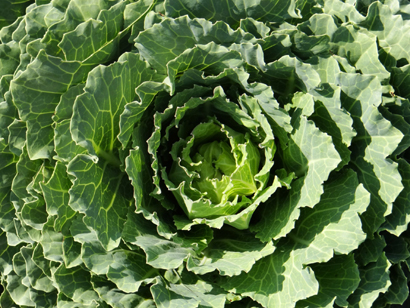 Just so we know, the term “conventional produce” is another way of labeling food that has pesticides, herbicides, fungicides and is made with seeds that are, more than not, genetically modified. The question becomes why are we accepting the term “conventional produce?”
Just so we know, the term “conventional produce” is another way of labeling food that has pesticides, herbicides, fungicides and is made with seeds that are, more than not, genetically modified. The question becomes why are we accepting the term “conventional produce?”
Isn’t it just a term to deter us from questioning why we allow any kind of spraying that might be carcinogenic or dis-ease causing or genetically modified? This reminds me of sleight of hand except for the mind: talking about one subject to take the focus off another. Exactly the same as the discussion that we should label GMOs, why are we talking about labeling them when we should be preventing their use altogether until some large independent study not performed by a friend of the GMO industry is done for all to see. Should we not look at the European Union that has many restrictions against GMOs?
QUICK TIP: Kale is on the Environmental Worker’s Group list of the Dirty Dozen, meaning it is one of the pieces of produce that retains heavy pesticide residue. When buying kale, make it organic.
NATIONAL ORGANIC STANDARDS BOARD
It’s bad enough that the NOSB allows hundreds of chemicals on its list of what is allowed and what is not. I thought it was 32, but there’s a huge list.
ACTION STEP
If you would like to make a comment before the annual meeting of the National Organic Standards Board, go to:
http://www.regulations.gov/#!submitComment;D=AMS-NOP-15-0037-0001.
The cut-off date to comment is October 8, 2015 for the October, 2015 meeting, so the time is now. Or just notice when the next meeting will be and get ready to make a comment.
MY NATIONAL ORGANIC STANDARDS BOARD COMMENT
There are far too many exceptions on organic food. The idea of organic food was not to benefit the industry. It was to eat cleaner food. How can we, who are not farmers, live better lives, when those of you who are specialists are not strict enough to advocate on our behalf?
In the meantime, why isn’t it required that everything that has the USDA Certified Organic logo on it be labeled with EVERYTHING that has been used on it up until the point it reaches the retailer?
We deserve to know that bananas are gassed with ethylene, one of the less troublesome allowances. OR sulfur dioxide may be present. Why is not a sign required in every retailer’s store in full view of every counter that holds produce revealing that the produce has such and such on it or was treated with such and such even though it evaporated?
It’s our right to know.
The biggest problem with not having a labeling requirement for every showcase of every retailer of organics is that retailers have no idea what’s on the produce, so we can’t ask the retailer. Retailers are not required to give a phone number of a producer or finisher, so, most of the time, we have to go hunting the number down to call them and they end up saying they don’t even know what’s in the combination chemical they use from such and such a company. So the poor consumer who calls about only 1 piece of produce a day has to endure 5-10 phone calls to get one answer and rarely gets an answer at all.
What if we are allergic to xanthan gum? How will we know whether there is any present? OR what if we choose not to eat produce that has xanthan gum? How are we to know?
Please help by making producers pass on their pesticide, herbicide, fungicide, wax/coating list. And then there’s beeswax. Can’t we make a rule that animal product must be labeled as such so that we can choose our produce without 10 phone calls for one piece of produce a day?
Thank you for your help.
GMOs
Genetically modified organisms are those items that have been manipulated by science, not nature. GMOs are made using seeds that have had their DNA changed in some way. To slow the extinction of the human race, science may be needed at some time in the future when soil no longer produces. But, now, we have not researched its perils, and we put ourselves at risk for its side effects.
Modification of seeds and plants has occurred as a means to profit and success. I love profit and success. It shows some of the productivity and creativity of humankind. Unfortunately, genetic engineering has been done at the expense of our personal health. No viable tests have been conducted by non-interested science groups to show that the harmful effects from GMOs are real. Often,we rely on the industry study reports that favor their own agenda. Yes, we all do that, but this is about the food we eat, so why aren’t we taking better care?
PUBLISHER’S NOTE ~ PERSONAL HEALTH
Many industries profit by taking a toll on our personal health – the war machine, although I am soooooooooooooo grateful for my United States Military – I just don’t agree with creating war to sell military product; the pharmaceutical industry – creating drugs that are not necessary and giving medical personnel incentives for recommending said drugs; the food industry’s putting sugary, oily, salty ingredients in our food so that we buy more at the expense of our lives. One more example is the food industry’s convincing us we need meat and dairy at the expense of animal’s lives and, worse, our own good health.
PUBLISHER’S NOTE ~ SOILING AN ORGANIC FARM
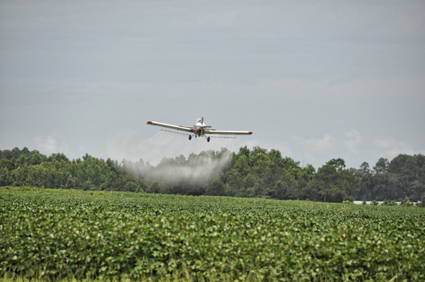 Another tidbit I’d like to mention comes from a true story in 2009 from a 152-year-old farm that had been working on becoming organic. The farmers, 5th generation in their family, were in their 3rd (which is the final) year of working the land following organic guidelines – it takes 3 years of organic protocols to get certified.
Another tidbit I’d like to mention comes from a true story in 2009 from a 152-year-old farm that had been working on becoming organic. The farmers, 5th generation in their family, were in their 3rd (which is the final) year of working the land following organic guidelines – it takes 3 years of organic protocols to get certified.
One day, a crop duster came to spray non-organic pesticides on a neighboring major player GMO farm. Accidentally, the pilot forgot to turn off the spray. Unfortunately, that action pesticided the 3 years of work. Not sure if the certifiers discredited the 3 years or not. They should have (but lots of things slip through), and wow, how too bad.
CONCLUSION
When the word “Conventional” is on some sign in front of us, hopefully, we will take a good long look at it and realize it is another word for strong chemicals that can be more carcinogenic than the allowances on organic produce and genetically modified which is not permitted on organic produce. Let’s call it what it is,
“More-heavily sprayed & probably genetically modified stuff,”
and know that organic produce is
“Sprayed with different ills & probably not genetically modified stuff.”
Keep in mind that not all organics are sprayed, and not all conventional produce is a GMO. But let not the word “conventional” make us blind. Let us call it what it is. And do personal research.
ACTION STEPS
1) Don’t forget to go to http://whatsonmyfood.com. Pick your favorite produce, and go have a look.
2) Make a comment at the National Organics Standard Board website here: http://www.regulations.gov/#!submitComment;D=AMS-NOP-15-0037-0001. If too late for this meeting, notice the next time you can comment.
3) Keep sharp. Conventional means more heavily sprayed. End of story. Buy organic food, and don’t forget to check out this video (remember that unsprayed crop that starts with GM seeds is not organic, even if you love the local farm from which it came): https://www.youtube.com/watch?v=YtwZ8t5NS6c
![]()
If you wish to share your story, please hit reply in your email program to be contacted.
If you need habit help, go to warriorsofweight-consulting.
![]()
FEEDBACK
We value your feedback very much.
Please leave a comment below.
Please LIKE us on the website and at
WarriorsOfWeight on Facebook.
You can also follow us on Twitter @warriorsoweight.
Thanks.
![]()
DIANE GOLD, PUBLISHER AND AUTHOR
Diane Gold, Founder of Warriors of Weight, Turning Habits Into Health, is a mentor in tai chi, kung fu and meditation, a music, fitness and stress expert, dedicated mom, studying peaceful conflict resolution, habit replacement and certified in plant-based nutrition.
She is very aware of how marketers secretly enter the minds of their customers.
She says,
“Marketers have their jobs. And I love creativity in the making. I do know that the job of swaying the public is fun and continual. I also know that it’s my job to mention it to the public. Therefore, I am pointing out the term “conventional produce.” It’s only a convention because we have been duped into thinking that Big Food, Big Agro, Big Dairy are on our side. They are on their side as are most businesses that continue to operate.
“Let’s keep our eyes open and know that we are responsible for our own food research. Let’s figure a way to use organic produce, even if we have to sacrifice a new piece of clothing or a movie.
“Wouldn’t it be great if conventional were organic so that the norm would be organic? Until that time, let’s be aware of what’s on conventional produce and choose organic.
“Finally, let’s take overall good care of ourselves because we are so worth it.”![]()

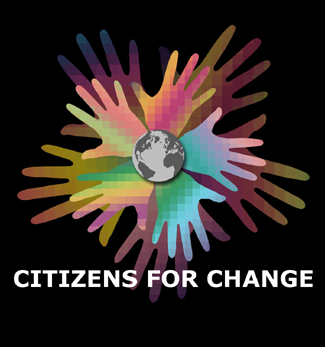 If we look at the predominant age group of people who know about GMOs and who just marched against the biggest seed and pesticide company that genetically modifies our food, we see lots of people between 10 and 40. This is great. It means that the more current generations are educated about food or are more savvy at realizing the mis-education they have gotten from food company’s who trade human health for profit. And the families who stand up against GMOs have children whom they have taught or who have been taught in school.
If we look at the predominant age group of people who know about GMOs and who just marched against the biggest seed and pesticide company that genetically modifies our food, we see lots of people between 10 and 40. This is great. It means that the more current generations are educated about food or are more savvy at realizing the mis-education they have gotten from food company’s who trade human health for profit. And the families who stand up against GMOs have children whom they have taught or who have been taught in school. No matter what age, the time is now to stand together, jump together, march together, dance together, and educate together that genetic modification of food is not the way, while we still have other options. We can look at the great example of marchers against the big seed company, that took place the last Saturday in May, 2014, and be inspired – over 50 countries, over 400 coordinated marches.
No matter what age, the time is now to stand together, jump together, march together, dance together, and educate together that genetic modification of food is not the way, while we still have other options. We can look at the great example of marchers against the big seed company, that took place the last Saturday in May, 2014, and be inspired – over 50 countries, over 400 coordinated marches.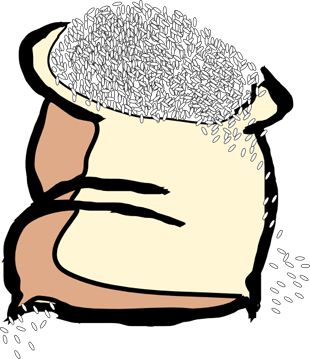 1)
1) 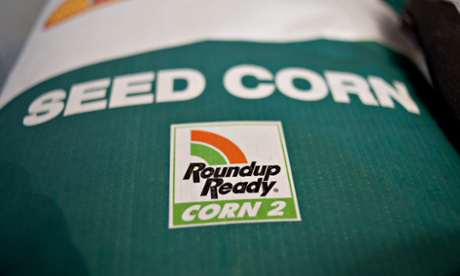 Luckily, we are citizens for change; and we see the need to label GMOs and ban them. Kudos to the State of Vermont for passing a bill that will require labeling of genetically modified anything by 2016. Hopefully, this action will not be politically undone.
Luckily, we are citizens for change; and we see the need to label GMOs and ban them. Kudos to the State of Vermont for passing a bill that will require labeling of genetically modified anything by 2016. Hopefully, this action will not be politically undone. We are all citizens for change. We can uplift ourselves and move away from the status quo. We all need more knowledge of our food supply and what is best for our bodies and minds. Let not one day go by where we are not on the lookout for good information given with for humanitarian concern only. Let us also be aware of commercial information that may be manipulated to benefit its supplier, manufacturer, distributor or other profiteer. Our lives depend upon our proactivity, so, to follow, are some ways we can take action.
We are all citizens for change. We can uplift ourselves and move away from the status quo. We all need more knowledge of our food supply and what is best for our bodies and minds. Let not one day go by where we are not on the lookout for good information given with for humanitarian concern only. Let us also be aware of commercial information that may be manipulated to benefit its supplier, manufacturer, distributor or other profiteer. Our lives depend upon our proactivity, so, to follow, are some ways we can take action.
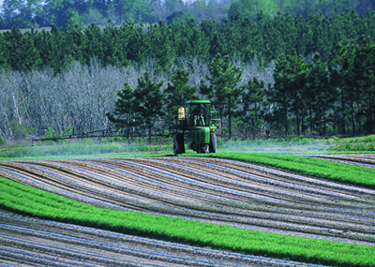 The Environmental Protection Agency (epa.gov) regulates pesticides, but the amounts it allows in our fruits and vegetables is not so easy for the lay person to evaluate. Partly because we don’t have the time to look up the more than 1055 approved pesticides in use in the US and partly because the EPA is not offering the easiest chart for consumers. Agricultural Pesticides
The Environmental Protection Agency (epa.gov) regulates pesticides, but the amounts it allows in our fruits and vegetables is not so easy for the lay person to evaluate. Partly because we don’t have the time to look up the more than 1055 approved pesticides in use in the US and partly because the EPA is not offering the easiest chart for consumers. Agricultural Pesticides
 Whatsonmyfood.org gives us some excellent information about the presence of pesticides on foods. It takes its info from the US Department of Agriculture, Pesticide Data Program, currently using 2005 data. For example, it lists that blueberries have a particular percentage of all blueberries in the US, on average, have pesticides A, B, C, D, E, F, G, H, I, J, K, L, M, N, O, P, Q, R, S, T, U, V, W, X, Y, Z, AA, BB, CC, DD, EE, FF, GG, HH, II, JJ, KK, LL, MM, NN, OO, PP, QQ, RR, SS, TT, UU, VV, WW, XX and YY present. It would be great if we could easily find a table showing the EPA tolerances (amount of pesticides that are permitted to be present and still be safe for consumption) for each of those pesticides.
Whatsonmyfood.org gives us some excellent information about the presence of pesticides on foods. It takes its info from the US Department of Agriculture, Pesticide Data Program, currently using 2005 data. For example, it lists that blueberries have a particular percentage of all blueberries in the US, on average, have pesticides A, B, C, D, E, F, G, H, I, J, K, L, M, N, O, P, Q, R, S, T, U, V, W, X, Y, Z, AA, BB, CC, DD, EE, FF, GG, HH, II, JJ, KK, LL, MM, NN, OO, PP, QQ, RR, SS, TT, UU, VV, WW, XX and YY present. It would be great if we could easily find a table showing the EPA tolerances (amount of pesticides that are permitted to be present and still be safe for consumption) for each of those pesticides. The Environmental Working Group has created a consumer guides that lists which top fruits and veggies have the most and least pesticides so that we can choose how to spend our money and ingest fewer pesticides. This group is the environmental health and advocacy organization whose work resulted in the Food Quality Protection Act in 1996.
The Environmental Working Group has created a consumer guides that lists which top fruits and veggies have the most and least pesticides so that we can choose how to spend our money and ingest fewer pesticides. This group is the environmental health and advocacy organization whose work resulted in the Food Quality Protection Act in 1996.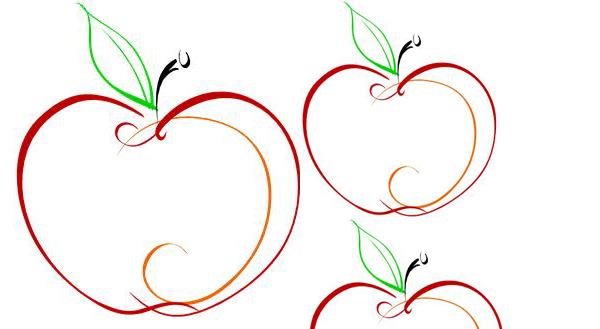 APPLES
APPLES


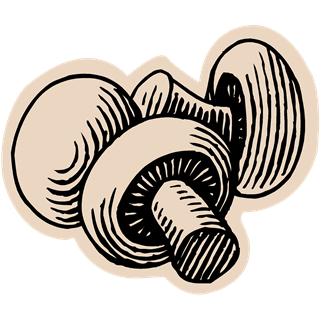
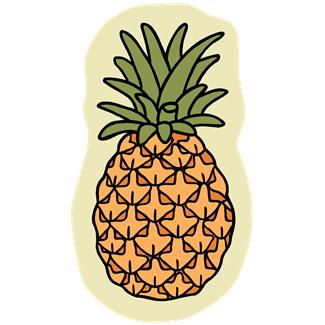
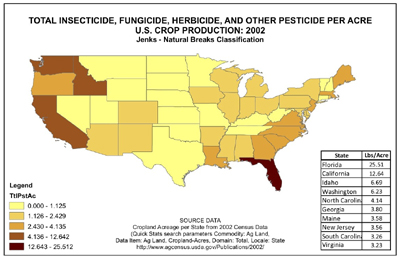 Pesticides are here, both on organic and conventional produce. Synthetic pesticides can burn the mouth, lungs, the respiratory system, cause nerve damage, cause skin to peel or change color, cause temporary blindness when exposure is high. Hopefully, we are never exposed to enough at once to cause anything like this. But it makes us think about how safe pesticides are in smaller quantities on our food.
Pesticides are here, both on organic and conventional produce. Synthetic pesticides can burn the mouth, lungs, the respiratory system, cause nerve damage, cause skin to peel or change color, cause temporary blindness when exposure is high. Hopefully, we are never exposed to enough at once to cause anything like this. But it makes us think about how safe pesticides are in smaller quantities on our food.
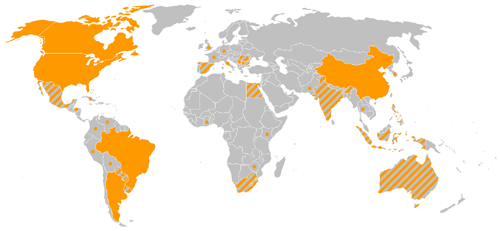 For years, we have been ingesting food that has been modified to yield bigger crop, faster growth, more eye-appealing shape, resist or repel certain insect infestation and more.
For years, we have been ingesting food that has been modified to yield bigger crop, faster growth, more eye-appealing shape, resist or repel certain insect infestation and more. Of course, governments are corporations. They deal with other corporations. When one corporation does a business deal with another, a purchase or transaction is made.
Of course, governments are corporations. They deal with other corporations. When one corporation does a business deal with another, a purchase or transaction is made.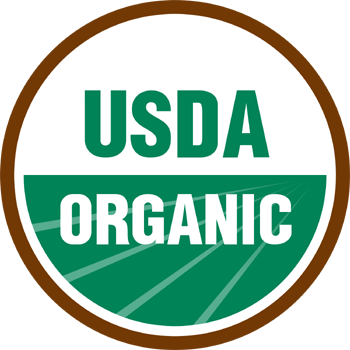 1.
1.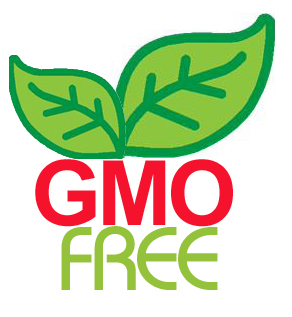
 Old habits die hard. Now that our eyes are opening, and many of us are aware of the uncertainties of consuming GMOs, let’s work on changing our habit of consuming without asking. Let’s be diligent so that we can create healthier habits to pass on to our children and to theirs. The more of us who require non-GMO food, the less expensive it will be to certify it as “non-GMO” by label on a package or bushel of produce.
Old habits die hard. Now that our eyes are opening, and many of us are aware of the uncertainties of consuming GMOs, let’s work on changing our habit of consuming without asking. Let’s be diligent so that we can create healthier habits to pass on to our children and to theirs. The more of us who require non-GMO food, the less expensive it will be to certify it as “non-GMO” by label on a package or bushel of produce.





